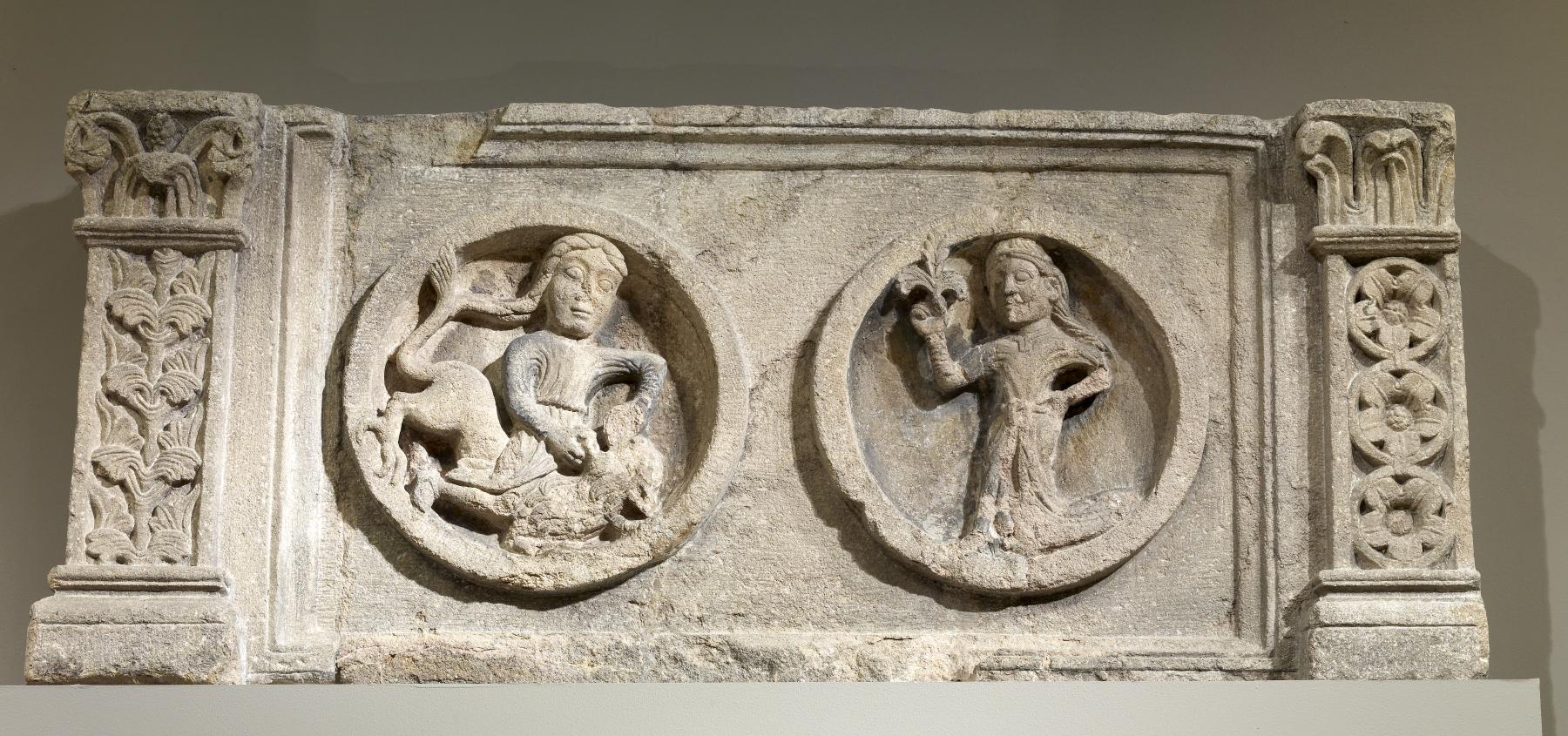Lintel with Samson and Delilah
(Medieval Europe )
The roundels of this stone lintel show, on the left, Samson killing the lion, and, on the right, Delilah holding a flower, a reference to her role as the flirtatious temptress and seducer of Samson. The relief is from a doorway in the wealthy medieval town of Cluny, famous for its Benedictine monastery, which was the largest in the world at one time. Many of the town's houses were decorated with carved capitals and lintels, like this one.
Provenance
Provenance (from the French provenir, 'to come from/forth') is the chronology of the ownership, custody, or location of a historical object. Learn more about provenance at the Walters.
Abbey of Cluny (?), Cluny, ca. 1850 [sketched by Jean-Claude Barat]; in situ 10 rue de la Barre, Cluny [in undated photograph]; Mme. Jacques Bacri, Paris [date and mode of acquisition unknown]; Walters Art Museum, October 13, 1971, by purchase.
Conservation
| Date | Description | Narrative |
|---|---|---|
| 4/24/1974 | Treatment | cleaned; coated; repaired |
Geographies
France, Cluny (Place of Origin)
Measurements
H: 23 7/8 x W: 57 1/8 x D: 9 5/8 in. (60.7 x 145.1 x 24.5 cm)
Credit Line
Museum purchase, 1971
Location in Museum
Centre Street: Third Floor: Migration and Early Medieval Art
Accession Number
In libraries, galleries, museums, and archives, an accession number is a unique identifier assigned to each object in the collection.
In libraries, galleries, museums, and archives, an accession number is a unique identifier assigned to each object in the collection.
27.580


